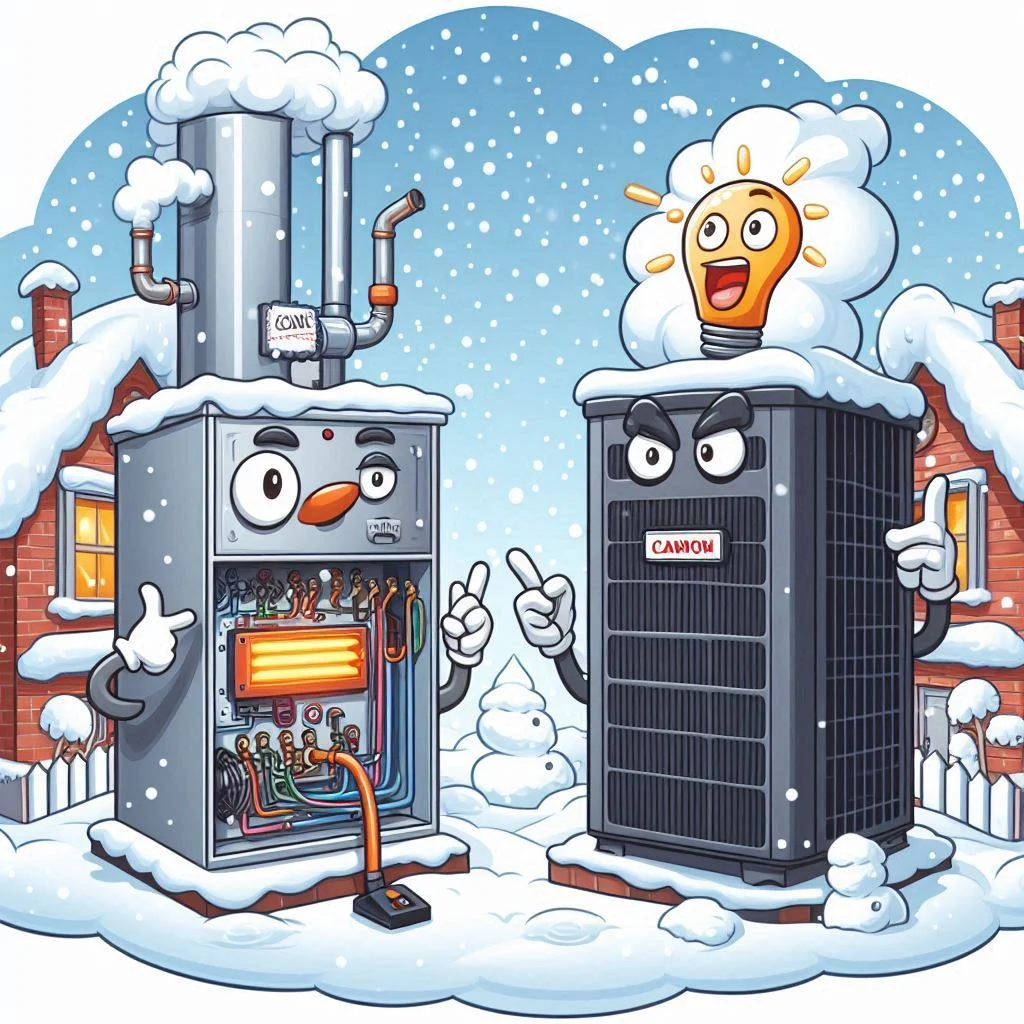Save More on Heating: Heat Pumps vs. Gas Furnaces Cost Comparison
Photo Credit : Designer
When it comes to saving money on heating, the comparison between heat pumps and gas furnaces ultimately comes down to efficiency and operational costs. In general, heat pumps have the potential to save more money over time due to their higher efficiency, especially when electricity rates are lower or comparable to natural gas prices.
Heat pumps are inherently more efficient because they move heat rather than generate it. For every unit of energy they consume, they can produce three to four units of heat, depending on the model. This means a heat pump can operate at 300-400% efficiency, while even the most efficient gas furnaces only reach about 98%. Because of this efficiency advantage, heat pumps tend to use less energy overall to heat the same space, making them cheaper to operate in the long run.
For example, let’s look at real-world data. A family that switched from a gas furnace to a high-efficiency heat pump saw their annual heating costs drop by around 25%. The household previously spent about $1,200 per year on natural gas for heating, but after installing the heat pump, their electricity bill for heating dropped to around $900 per year. This $300 annual savings adds up significantly over time, especially when considering that heat pumps also replace air conditioners, further increasing their year-round cost-effectiveness.
However, the upfront costs of a heat pump are typically higher than those of a gas furnace. A heat pump installation can cost between $4,000 and $8,000, while a gas furnace is usually in the range of $2,500 to $5,500. But the lower operational costs of heat pumps often offset this initial price difference within a few years. For instance, if the heat pump saves $300 per year compared to a gas furnace, it could pay for itself within five to seven years, depending on local energy prices and usage.
Energy savings are also influenced by fuel costs. Natural gas prices tend to fluctuate more than electricity prices, which can make it harder to predict heating costs with a gas furnace. For example, during periods when natural gas prices spike, gas furnace users may see significantly higher heating bills, whereas heat pump users benefit from more stable electricity prices. Over a ten-year period, gas prices in some regions have increased by as much as 50%, while electricity rates remained relatively steady.
Another factor to consider is the maintenance and lifespan of each system. Heat pumps typically require more regular maintenance because they run year-round for both heating and cooling. Over time, the cost of maintaining a heat pump could be higher than that of a gas furnace, which only runs during the colder months. However, even with higher maintenance costs, the energy savings provided by heat pumps often outweigh the additional upkeep expenses.
In terms of environmental impact, heat pumps generally have a smaller carbon footprint than gas furnaces, especially if your electricity comes from renewable sources. This can translate to financial benefits in areas where governments or utility companies offer rebates or incentives for installing energy-efficient or environmentally friendly heating systems. These rebates can further reduce the cost of switching to a heat pump, making them an even more attractive option from a savings perspective.
In conclusion, while both heat pumps and gas furnaces can heat your home effectively, heat pumps usually save more money over time due to their higher efficiency and lower operational costs. Though heat pumps have a higher upfront cost, their ability to reduce heating bills year after year makes them a solid long-term investment for homeowners looking to cut costs.



